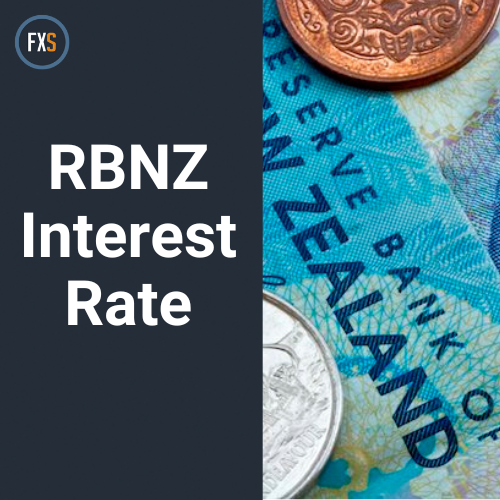
Reserve Bank of New Zealand’s (RBNZ) Governor Adrian Orr presents the prepared remarks on the policy statement and responds to media questions at the press conference after the November monetary policy announcement.
Following its November policy meeting, the RBNZ announced another 50 basis points (bps) cut to the Official Cash Rate (OCR) from 4.75% to 4.25%, as widely expected.
RBNZ press conference key quotes
Misnomer that our projections show slower pace of cuts.
Projections consistent with 50 bps in Feb depending on activity.
There were very limited discussions of 25 bps or 75 bps.
Track leaves door open to further 50 bps in February.
Confident domestic inflation pressures will continue to ease.
Nuetral rate is somewhere between 2.5% to 3.5%.
We can rule out rates going up in near term because of US tariffs.
Tariffs would put upward pressure on level of prices globally.
Economic Indicator
RBNZ Press Conference
Following the Reserve Federal´s economic policy decision, the Reserve Bank Governor gives a press conference regarding monetary policy. His comments may influence the volatility of NZD and determine a short-term positive or negative trend.
This section below was published at 01:00 GMT following the Reserve Bank of New Zealand (RBNZ) policy announcements.
The Reserve Bank of New Zealand (RBNZ) lowered the Official Cash Rate (OCR) by 50 basis points (bps) from 4.75% to 4.25%, following the conclusion of the November policy meeting on Wednesday.
The decision aligned with the market expectations.
Summary of the RBNZ Monetary Policy Statement (MPS)
OCR lowered further as inflation returns to target.
Global economic growth to remain subdued near term.
RBNZ expects to lower OCR further early next year.
Economic activity subdued.
Minutes of the RBNZ interest rate meeting
Committee agreed that a 50 basis point cut is consistent with their mandate of maintaining low and stable inflation, while seeking to avoid unnecessary instability in output, employment, interest rates and the exchange rate.
If economic conditions continue to evolve as projected, the committee expects to be able to lower the OCR further early next year.
There is a risk of greater inflation volatility over the medium term.
Committee has more confidence to continue removing monetary policy restraint,
There may be higher relative price volatility and more unpredictability in aggregate inflation.
Significant spare productive capacity expected over the next year.
Inflation is expected to remain near the midpoint.
RBNZ updated economic forecasts
RBNZ sees Official Cash Rate at 4.07% in March 2025 (pvs 4.62%).
RBNZ sees Official Cash Rate at 3.55% in December 2025 (pvs 3.85%).
RBNZ sees TWI NZD at around 69.5% in December 2025 (pvs 69.5%).
RBNZ sees annual CPI 2.4% by December 2025 (pvs 2.3%)
RBNZ sees Official Cash Rate at 3.43% in March 2026 (pvs 3.62%).
RBNZ sees Official Cash Rate at 3.06% in December 2027.
NZD/USD reaction to the RBNZ interest rate decision
The New Zealand Dollar attracts some buyers in an immediate reaction to the RBNZ interest rate decision. The NZD/USD pair currently trades around 0.5875, up 0.80% on the day.
New Zealand Dollar PRICE Today
The table below shows the percentage change of New Zealand Dollar (NZD) against listed major currencies today. New Zealand Dollar was the strongest against the US Dollar.
| USD | EUR | GBP | JPY | CAD | AUD | NZD | CHF | |
|---|---|---|---|---|---|---|---|---|
| USD | -0.08% | -0.13% | -0.23% | -0.11% | -0.28% | -0.89% | -0.13% | |
| EUR | 0.08% | -0.04% | -0.13% | -0.03% | -0.20% | -0.81% | -0.05% | |
| GBP | 0.13% | 0.04% | -0.10% | 0.02% | -0.15% | -0.76% | 0.00% | |
| JPY | 0.23% | 0.13% | 0.10% | 0.11% | -0.06% | -0.67% | 0.09% | |
| CAD | 0.11% | 0.03% | -0.02% | -0.11% | -0.18% | -0.79% | -0.01% | |
| AUD | 0.28% | 0.20% | 0.15% | 0.06% | 0.18% | -0.61% | 0.15% | |
| NZD | 0.89% | 0.81% | 0.76% | 0.67% | 0.79% | 0.61% | 0.77% | |
| CHF | 0.13% | 0.05% | -0.01% | -0.09% | 0.01% | -0.15% | -0.77% |
The heat map shows percentage changes of major currencies against each other. The base currency is picked from the left column, while the quote currency is picked from the top row. For example, if you pick the New Zealand Dollar from the left column and move along the horizontal line to the US Dollar, the percentage change displayed in the box will represent NZD (base)/USD (quote
This section below was published on Tuesday at 20:15 GMT as a preview of the Reserve Bank of New Zealand (RBNZ) interest rate decision.
- The Reserve Bank of New Zealand is set to lower its key interest rate by 50 bps to 4.25% on Wednesday.
- The RBNZ is expected to front-load due to the economic recession and as inflation falls back into the target band.
- The New Zealand Dollar could see a big reaction to the RBNZ’s updated forecasts and Governor Orr’s press conference.
The Reserve Bank of New Zealand (RBNZ) will announce its interest rate decision on Wednesday at 01:00 GMT. The central bank is widely expected to cut the Official Cash Rate (OCR) by another 50 basis points (bps) from 4.75% to 4.25%.
A Reuters poll of 30 economists found 27 favoring a 50 bps rate reduction at the November policy meeting. The RBNZ cut the OCR by 25 bps during its August meeting and implemented an additional 50 bps reduction in October.
What to expect from the RBNZ interest rate decision?
Economists expect the RBNZ to front-load rate cuts due to the gloomy economic outlook and as inflation falls back into the central bank’s target range between 1% and 3%.
New Zealand’s economy skirted another recession after Gross Domestic Product (GDP) declined 0.2% in the second quarter (Q2) from the previous quarter’s revised 0.1% growth. Economists expected a 0.4% contraction in the reported period, while the RBNZ projected a 0.5% drop.
Meanwhile, NZ Stats showed on October 16 that New Zealand’s annual Consumer Price Index (CPI) rose 2.2% in Q3, aligning with market forecasts and marking a sharp slowdown from the 3.3% growth in Q2.
By front-loading, the RBNZ can move into less restrictive territory, alleviating the pressures of higher borrowing costs on households and businesses. Following its October meeting, the central bank said in the policy statement that “economic activity in New Zealand is subdued, in part due to restrictive monetary policy.”
With a 50 bps rate cut fully priced in, markets will pay close attention to the language of the Monetary Policy Statement (MPS) and the updated economic projections for fresh signals on future rate reductions.
How will the RBNZ interest decision impact the New Zealand Dollar?
Another downward revision to the OCR in the updated projections for this year and the next could reaffirm dovish expectations. The RBNZ currently forecasts the OCR at 4.92% in Q4 2024.
In this case, the New Zealand Dollar (NZD) will come under intense selling pressure, with sellers targeting levels unseen since November 2022 around 0.5750
The NZD could rally hard if the RBNZ surprises with a 25 bps rate cut or maintains the OCR forecasts. The NZD/USD could regain 0.5900 and beyond on an unexpected hawkish move.
Dhwani Mehta, FXStreet’s Senior Analyst, offers a brief technical outlook for trading the New Zealand Dollar on the RBNZ policy announcements: “The downside risks remain intact for the NZD/USD after a Death Cross was confirmed on the daily chart last Friday. Adding credence to the bearishness, the 14-day Relative Strength Index (RSI) stays vulnerable below the 50 level.”
“If buyers defy bearish pressures, the initial resistance is seen at the 21-day Simple Moving Average (SMA) at 0.5920, above which the 0.6000 round level will be tested. Further up, the confluence zone of the 50-day SMA, 100-day SMA and 200-day SMA near 0.6060 will be a tough nut to crack for them. Alternatively, failure to defend the October 2023 low of 0.5772 will threaten the November 2022 low of 0.5741,” Dhwani adds.
RBNZ FAQs
The Reserve Bank of New Zealand (RBNZ) is the country’s central bank. Its economic objectives are achieving and maintaining price stability – achieved when inflation, measured by the Consumer Price Index (CPI), falls within the band of between 1% and 3% – and supporting maximum sustainable employment.
The Reserve Bank of New Zealand’s (RBNZ) Monetary Policy Committee (MPC) decides the appropriate level of the Official Cash Rate (OCR) according to its objectives. When inflation is above target, the bank will attempt to tame it by raising its key OCR, making it more expensive for households and businesses to borrow money and thus cooling the economy. Higher interest rates are generally positive for the New Zealand Dollar (NZD) as they lead to higher yields, making the country a more attractive place for investors. On the contrary, lower interest rates tend to weaken NZD.
Employment is important for the Reserve Bank of New Zealand (RBNZ) because a tight labor market can fuel inflation. The RBNZ’s goal of “maximum sustainable employment” is defined as the highest use of labor resources that can be sustained over time without creating an acceleration in inflation. “When employment is at its maximum sustainable level, there will be low and stable inflation. However, if employment is above the maximum sustainable level for too long, it will eventually cause prices to rise more and more quickly, requiring the MPC to raise interest rates to keep inflation under control,” the bank says.
In extreme situations, the Reserve Bank of New Zealand (RBNZ) can enact a monetary policy tool called Quantitative Easing. QE is the process by which the RBNZ prints local currency and uses it to buy assets – usually government or corporate bonds – from banks and other financial institutions with the aim to increase the domestic money supply and spur economic activity. QE usually results in a weaker New Zealand Dollar (NZD). QE is a last resort when simply lowering interest rates is unlikely to achieve the objectives of the central bank. The RBNZ used it during the Covid-19 pandemic.



